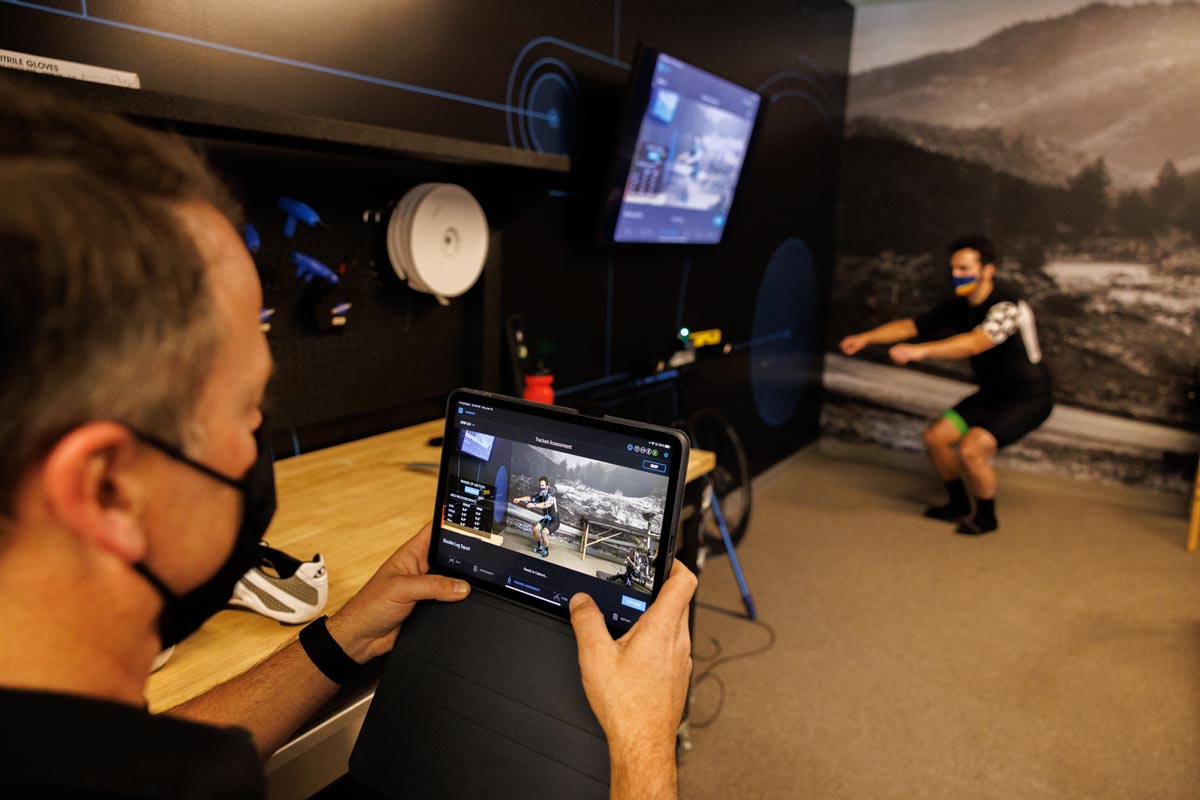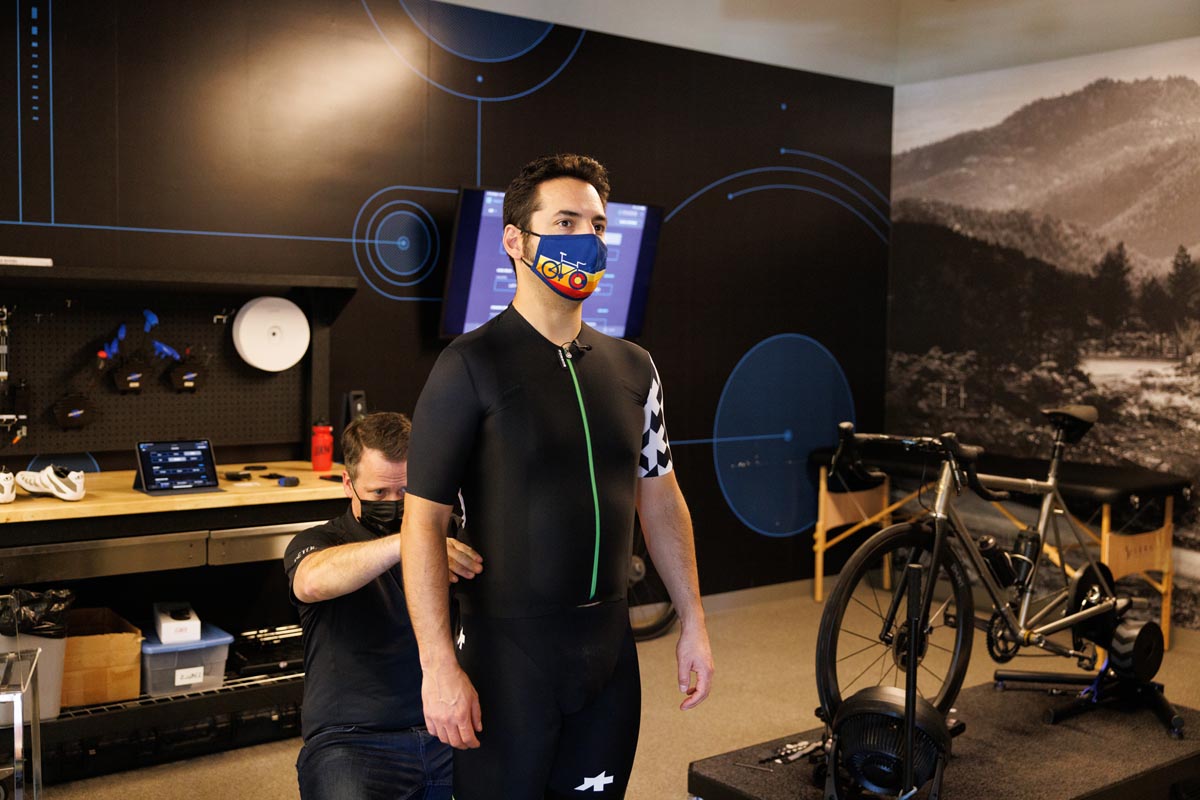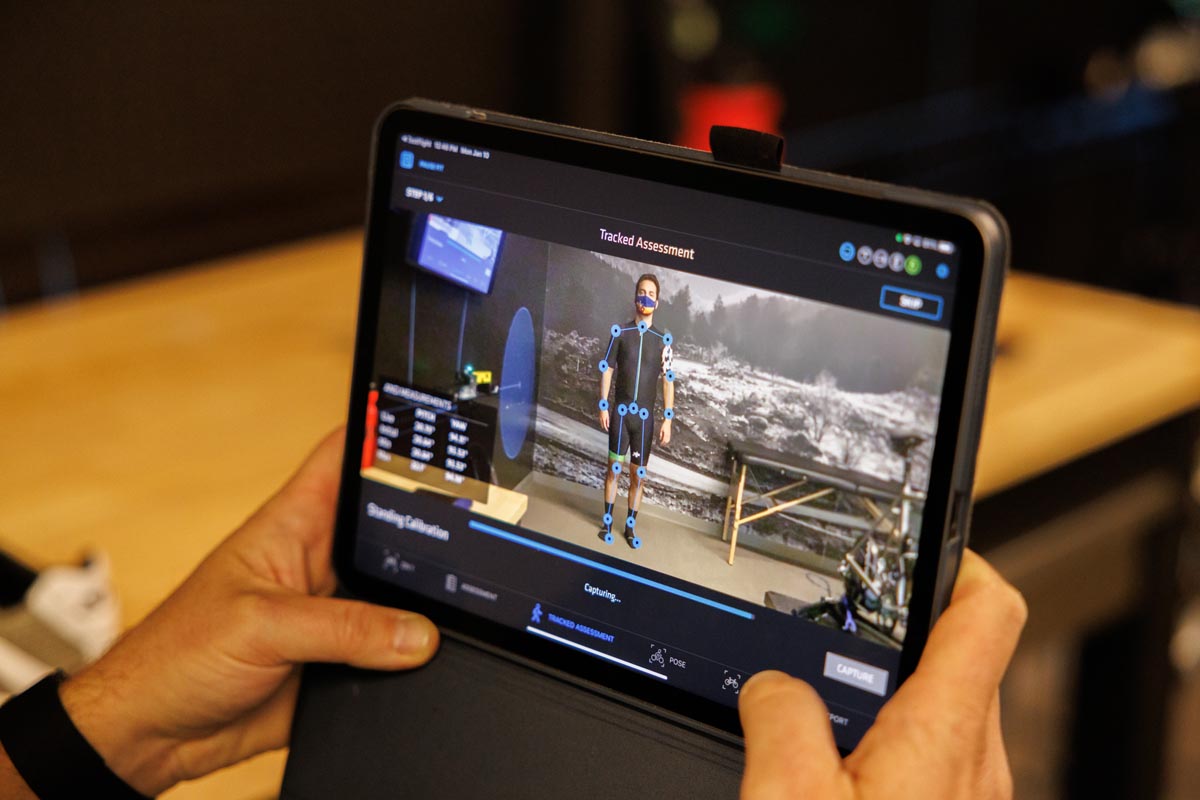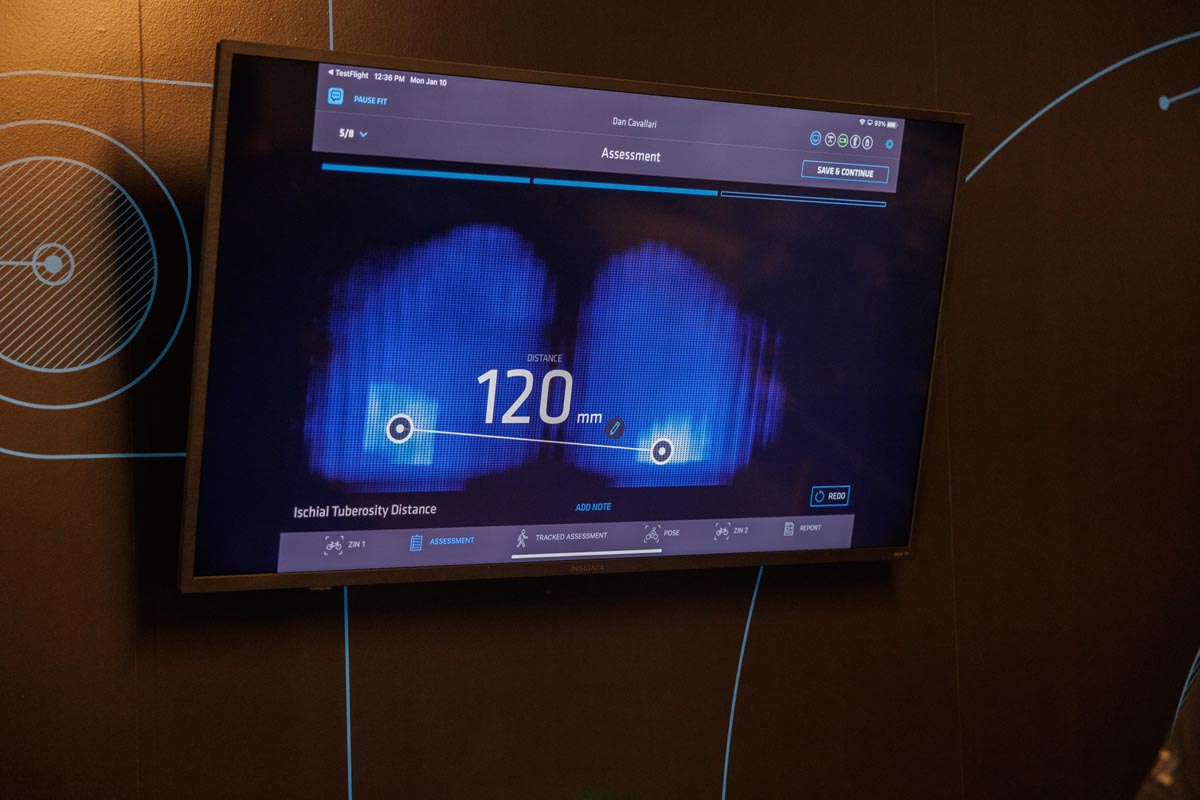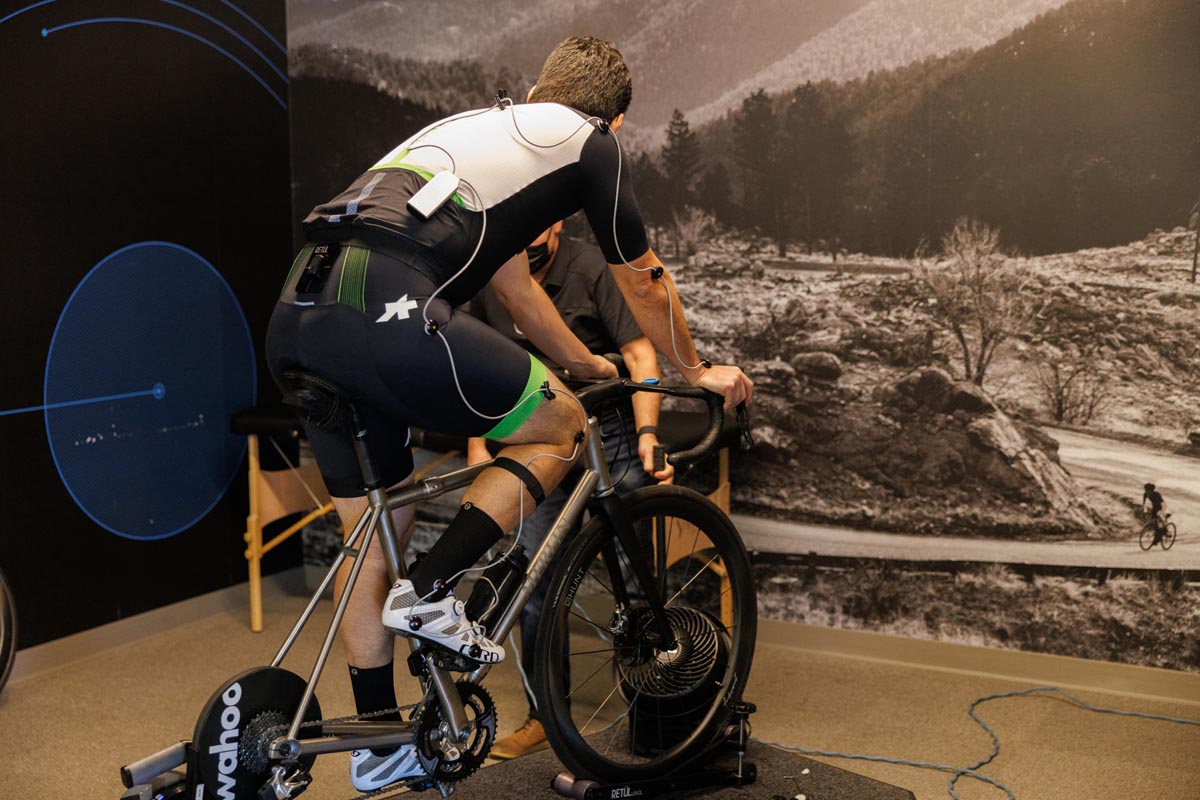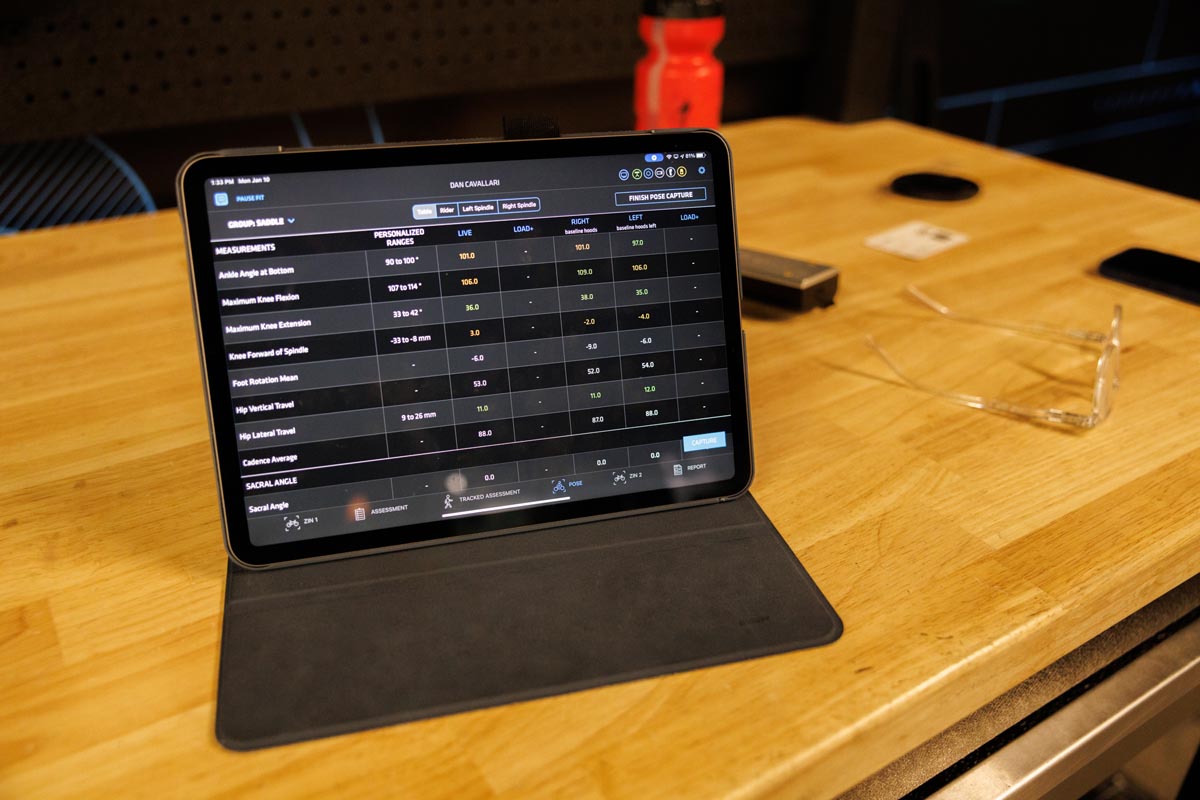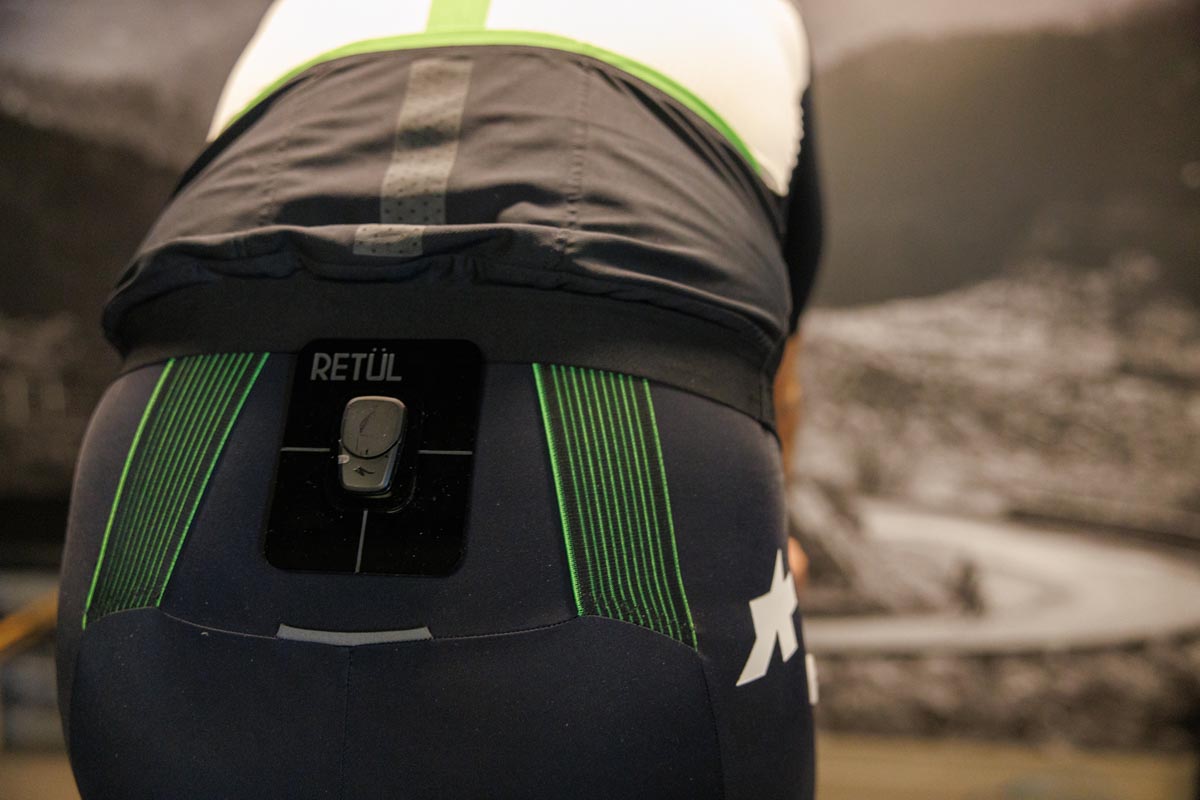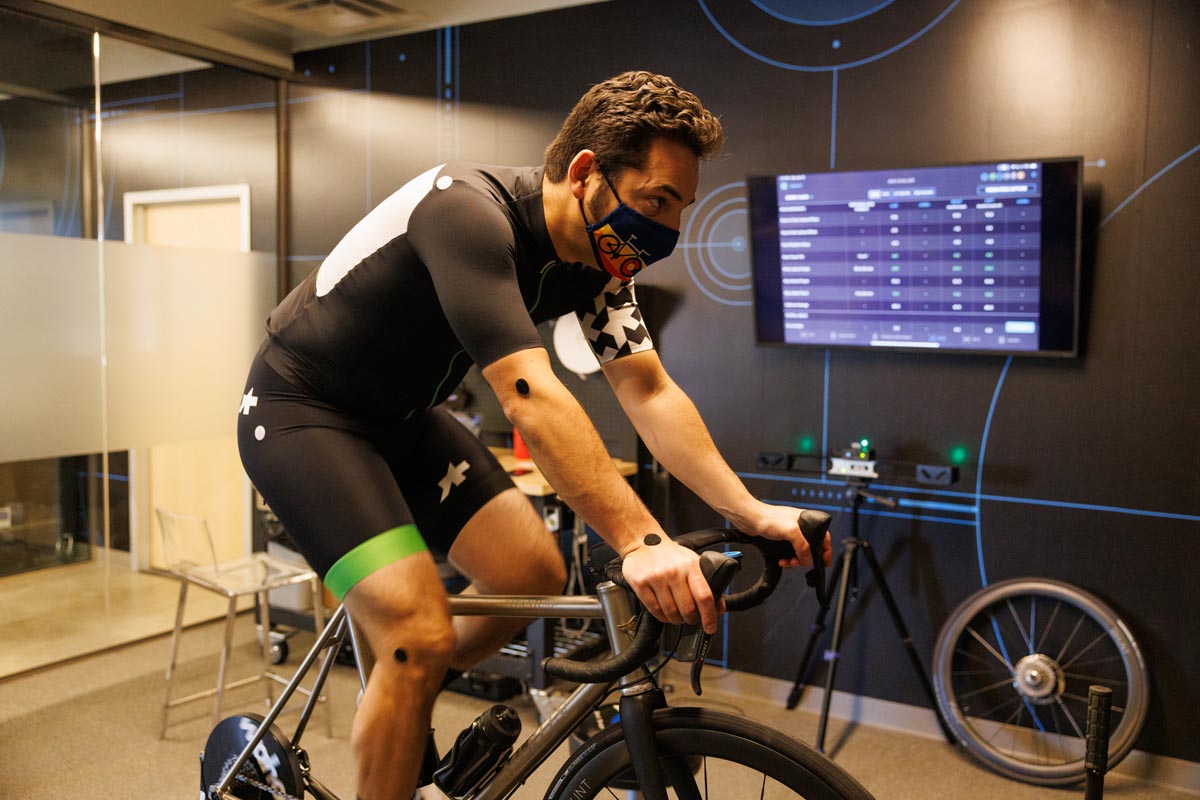In a game of millimeters, it helps to have a really good ruler. That’s exactly what Retül’s Premium Fit is: an extraordinarily accurate and refined measuring tool. The differences between the Retül Premium Fit and the standard fit ultimately boil down to some key technology that helps a fitter provide an athlete with a more specific picture of fit and performance, and what can be done to improve both.
On top of that, the Premium Fit standardizes some of the fit. Riders will end up less reliant on a specific fitter’s biases. Some fitters, for example, tend to focus more on race fit, but that might not be appropriate for an endurance rider. The technology and tracking features of the Premium Fit help ensure there are standards for each type of fit.
“The Retül Premium Fit is more personalized for the rider,” says Todd Carver, Chief Fit and Education Officer at Retül. “It ends up more suited for the rider’s goals and flexibility. Premium is for riders who want to improve. We fit you today, you go ride more or do stretches and the fit changes as you improve. If you want your fit to change as you change, the Premium Fit is right for you.”
I was fortunate enough to go through Retül’s Premium Fit at the Retül center at Specialized in Boulder, Colorado. Here’s what I learned about the process.
Retül Premium Fit: What’s new
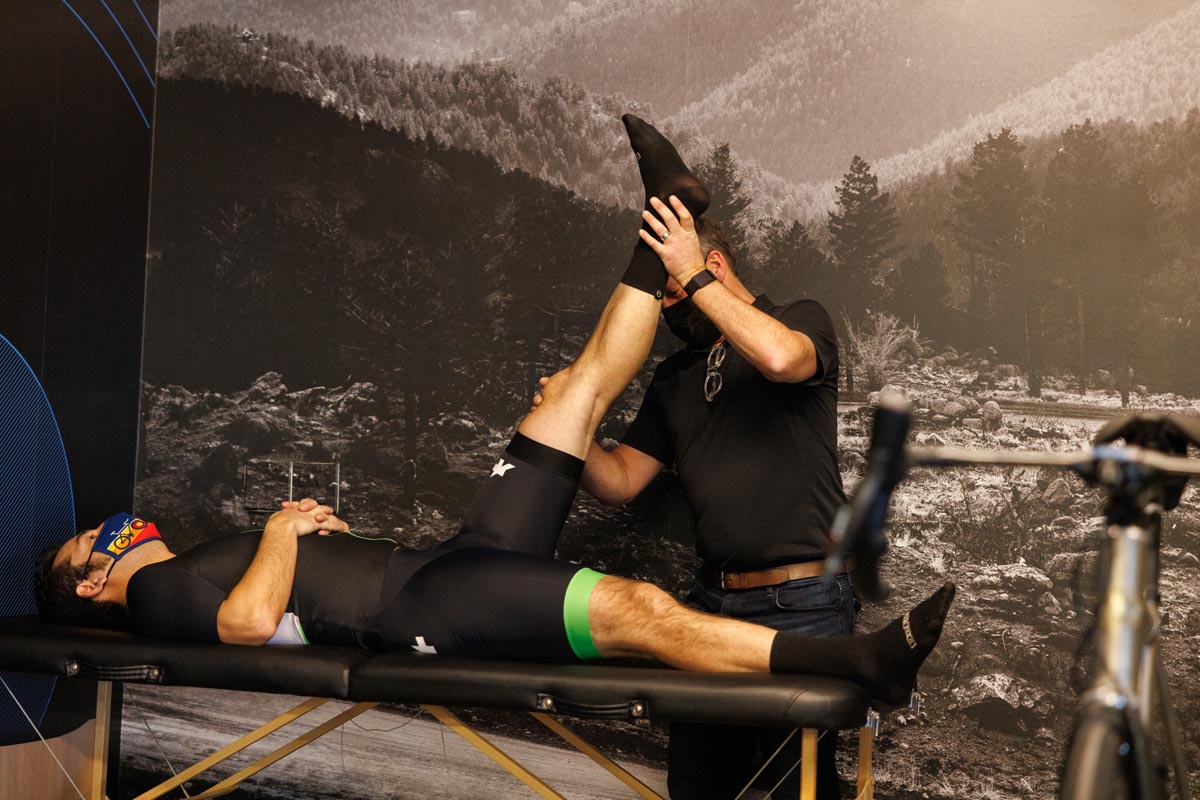
There’s a lot of new technology that makes the Retül Premium Fit very cool. But before any of that factors into the fit session, a rider will be guided through an information gathering session. This includes some subjective information — what kind of rider are you? What kind of bike fit matches you: endurance, race, etc? This helps the fitter define a personalized range for you. It gives a baseline assessment of what type of bike you ride, and how you ride it.
From there, the fitter will gather specific information about your flexibility and range of movement. This is where things get really cool. The fitter uses markerless motion capture in real-time. Using a video camera focused on the rider, the fitter assigns a skeletal overlay that tracks your movements. You’ll do a series of movements — stretching down to touch your toes, for example — so the fitter can input your motion capabilities into the system.
In other words, your biomechanical ranges will be partially defined before you even get on the bike. The fitter will therefore have a better understanding of your flexibility and any physical limitations that might factor into your fit. In the past, this was left to the fitter to define. Now, using LiDAR scanning technology on an iPad Pro, the information comes directly from the rider. It all runs through an iOS app that Retül developed in-house.
My fitter also measured my sit bones using a specially designed pad; just sit down on the pad and your sit bones appear on the screen in front of you, with the measurement in millimeters. This can help determine what size saddle you need.
The fit session
Then it’s time to get on the bike. This part feels just as expected: you get on the bike and pedal while the fitter takes measurements. But the Retül Premium Fit takes that data-gathering a step further by placing markers on key parts of your body to monitor motion in real-time. You’ll feel a bit awkward with wires flopping off of you, but largely, this part of the process feels like a normal training session for the rider. The Retül sensor bar tracks the motion of the body sensors in real-time, which delivers data to the iOS app for the fitter to interpret.
That data all gets recorded, and eventually plugged into a report that the rider can refer to after the session is over. It outlines the rider’s ideal movement ranges, as well as where the rider’s body fell within those ranges during the session.
My report even included my knee lateral travel — how far inboard and outboard my knees move as I pedal — which can help inform a fitter’s decisions about your riding position and even cleat position. The fitter can make recommendations for position changes based on any or all of the information in the report.
Retül Premium Fit’s personalized ranges
New and exclusive to the Retül Premium Fit are personalized ranges. These are essentially categories into which a rider will slot in order to provide a baseline for the overall fit session. They include:
- Performance Road
- Endurance Road
- Gravel
- Active
- Cyclocross Race
- MTB-Trail
- MTB XC
- Triathlon
- Draft Legal Triathlon
- Time Trial
For my fit session, I slotted into the Performance Road category. This means my body position is fairly aggressive. The personalized range template, combined with my individual body and mobility measurements, helps define ranges in which my body position on the bike should fit. “Had you picked the endurance fit,” says Carver, “the session would have been different. Good fitters generally do this all in their heads. The system is now set up to track it all automatically.”
For example, during the fit session, I wore a sacral angle sensor on my lower back. This measures the angle at which my back tilts in both the hoods position and in the drops. The Retül Premium Fit software produces an angle range in which my back’s angle should fit. As it turned out, my fit allowed me to remain in that range perfectly. But if you were out of the range, the fitter could make adjustments to get you back into it.
It’s worth noting that all of your body’s movement on the bike is tracked using the Retül sensor bar. This unit uses radio frequency (RF) wireless protocol. Since Ipads use Bluetooth, Retül had to add an RF to Bluetooth converter, called the Vantage Communication Box, or VCB. This allows the iPad app to track and record all of your data.
Retül says that the Vantage system, combined with the iPad camera and LiDAR technology, provides “more accurate data collection and an increase in speed and ease of use.”
In a standard fit, it is left up to the fitter to track any measurements and data. There is no data assessment, and the session largely serves to find your best riding position. The Premium Fit, on top of finding your best riding position, standardizes and records data automatically.
Center of Mass calculator
While it hasn’t yet been released, Retül is also offering a center of mass calculator as part of the Premium Fit. This will be most valuable for mountain bikers looking to improve handling, fit, and performance. The system uses thousands of data points that distill down to a single number so the center of mass can be identified and the bike can be set up to capitalize on it.
How do you get a Retül Premium Fit?
A Retül Premium Fit costs more than the standard fit — $400, which is $100 more than the standard fit, give or take.
Only a handful of fitters will be able to give you a Premium Fit at first, which means you may have to travel to find the fitter nearest you. Fitters need to go through training in order to offer Premium Fit services.
Retül At Home
Finally, a new app — entirely separate from the Retül Premium Fit — called Retül At Home offers a customized exercise and mobility program just for you. Once you download the app, you’ll be guided through a series of tests that will help uncover your areas for improvement and your current mobility.
After the test, your results are distilled into a single score that will help dictate your personalized exercise routine. You can re-take the self-evaluation as you progress through the exercise routine to track your progress and get a new exercise program if your score has changed. You can download the app now at Retül.com.
